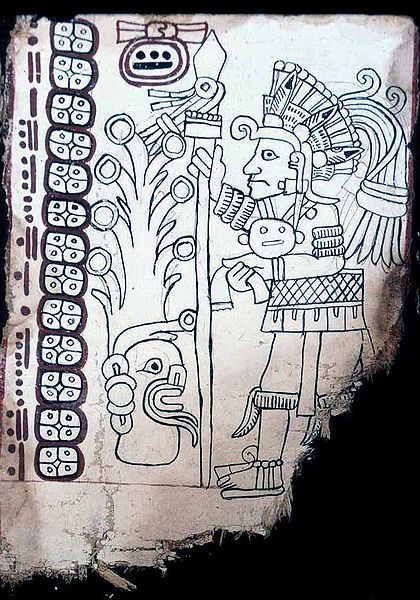'Fake' Maya codex is actually the most ancient manuscript from the Americas ever discovered
13th century document has been dubbed a forgery since it was first discovered in 1860s.

A Maya codex that has been dubbed a fake for the last 50 years has been found to be a genuine artefact, making it the oldest manuscript from the Americas ever discovered. The Grolier Codex has been the subject of controversy since it was first found in the 1960s, but using the latest scientific techniques researchers have been able to confirm its place in ancient history.
Published in a special section of Maya Archaeology, researchers note that academics have questioned the authenticity of the codex for many reasons.
The manuscript was found by looters in a cave in Chiapas in Mexico with six other items, including a sacrificial knife.
While all the other objects were shown not to be fakes, questions remained about the codex. Some suggested the looters may have known enough about Maya writing and materials to create the book.
Further to this, many questioned details provided by Josué Sáenz, the collector who was first contacted by the looters about the codex, while the manuscript itself differed from other examples from the Maya civilisation.
"It became a kind of dogma that this was a fake," said Stephen Houston, from Brown University and who worked on the study. "We decided to return and look at it very carefully, to check criticisms one at a time. Now we are issuing a definitive facsimile of the book. There can't be the slightest doubt that the Grolier is genuine."






Grolier Codex
The manuscript consists of 10 pages decorated with ritual iconography and a chart that tracks the movement of the planet Venus. The gods depicted are involved in everyday life that were invoked for simple needs. While other manuscripts involve a wide range of gods, the Grolier is "stripped down to fundamentals". Researchers say Venus calendars were important because it helped Maya people create ritual cycles based on astronomy.
"In my view, it isn't a high-end production," Houston said, "Not one that would be used in the most literate royal court. The book is more closely focused on images and the meanings they convey." The team said it was probably used for at least three generations as a calendar. The codex was created at a time when Chichen Itza in Yucatán and Tula were in decline – the codex, therefore, was created by someone living in "difficult times".
To finally settle the debate of the Grolier Codex, the team looked at all the known research about the manuscript, disregarding any politics surrounding its history. They looked at the nature of the style, the iconography, carbon dating and craftsmanship – Maya people had a very specific way of making paper.
Finding showed that while the manuscript is different from others from the era, it is still an authentic artefact. Moreover, radiocarbon dating showed it predates the other Maya codices, making it the oldest in existence.
The team say an early 20<sup>th century forger would not have been able to create such a convincing fake. Researchers concluded: "A reasoned weighing of evidence leaves only one possible conclusion: four intact Mayan codices survive from the Pre-columbian period, and one of them is the Grolier. [The study] is a confirmation that the manuscript, counter to some claims, is quite real."
© Copyright IBTimes 2025. All rights reserved.






















